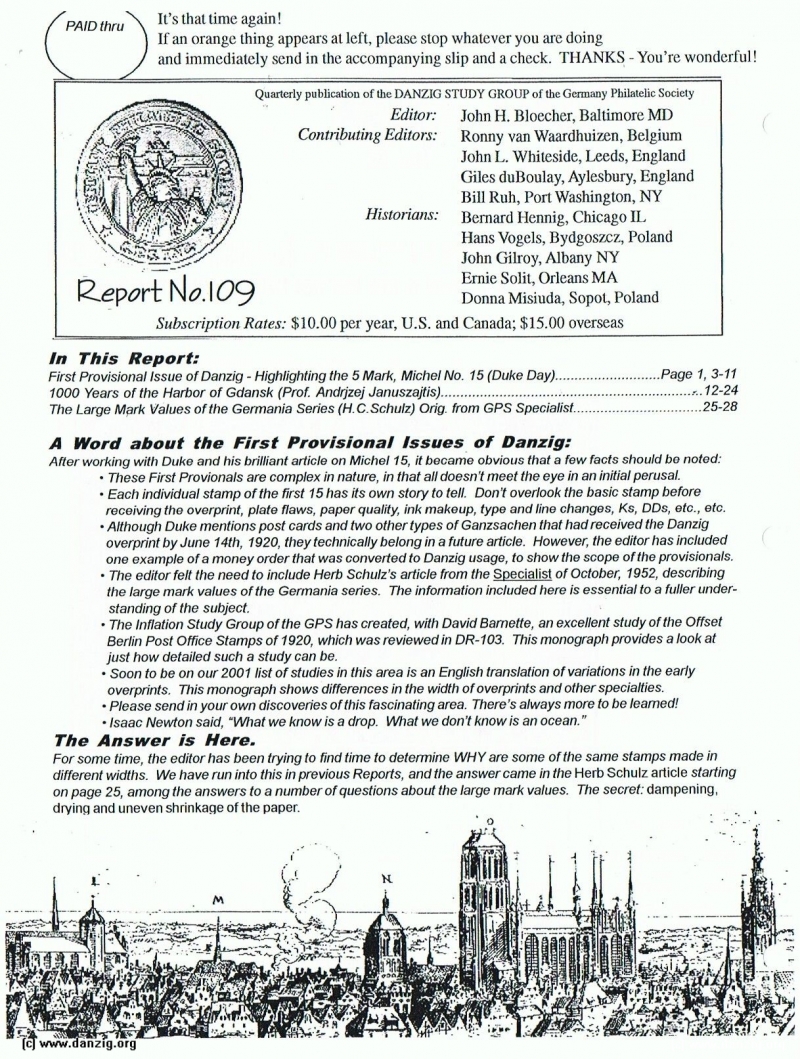
In This Report:
First Provisional Issue of Danzig - Highlighting the 5 Mark, Michel No. 15 (Duke Day) ...Page 1, 3-11
1000 Years of the Harbor of Gdansk (Prof. Andrjzej Januszajtis) . ............................................12-24
The Large Mark Values of the Germania Series (H. C. Schulz) Orig. from GPS Specialist .........25-28
A Word about the First Provisional Issues of Danzig:
After working with Duke and his brilliant article on Michel 15, ii became obvious that a few facts should be noted:
• These First Pro vionais are complex in nature, in that all doesn’t meet the eye in an initial perusal.
• Each indMdual stamp of the first 15 has its own story to tell. Don’t overlook the basic stamp before receiving the overprint, plate flaws, paper quality, ink makeup, type and line changes, Ks, DDs, etc., etc.
• Although Duke mentions post cards and two other types of Ganzsachen that had received the Danzig overprint by June 141 h, 1920, they technically belong in a future article. However, the editor has included one example of a money order that was converted to Danzig usage, to show the scope of the pro visionals.
• The editor felt the need to include Herb Schulz’s article from the Specialist of October, 1952, describing the large mark values of the Germania series. The information included here is essential to a fuller unders tanding of the subject.
• The Inflation Study Group of the GPS has created, with David Bamette, an excellent study of the Offset Berlin Post Office Stamps of 1920, which was reviewed in DR-103. This monograph provides a look at just how detailed such a study can be.
• Soon to be on our 2001 list of studies in this area is an English translation of variations in the early overprints. This monograph shows differences in the width of overprints and ot her specialties.
• Please send in your own discoveries of this fascinating area. There’s always more to be learned!
• Isaac Newton said, What we know is a drop. What we don’t know is an ocean.”
The Answer is Here.
For some time, the editor has been trying to find time to determine WHY are some of the same stamps made in different widths. We have run into this in previous Reports, and the answercame in the Herb Schulz article starting on page 25, among the answers to a number of questions about the large mark values. The secret: dampening, diving and uneven shrinkage of the paper.
Danzig Report Vol. 1 - Nr. 109 - October - November - December - 2000, Page 2.
Hits: 3677
Added: 28/07/2015
Copyright: 2025 Danzig.org

